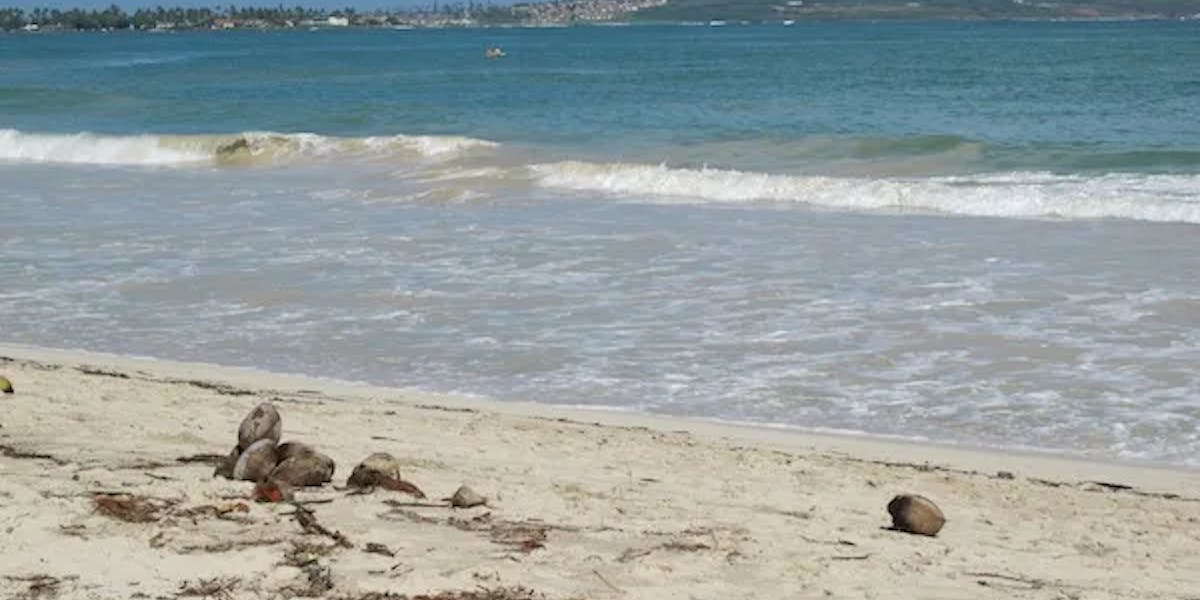Hawaii Coconut Harvest

Coconuts line the beach in Hawaii, tossed by the winter waves. It is not unusual to see coconuts floating in the waters near the shore but I don’t usually see this many on the sand all at one time.
Coconut trees are common on all the islands of Hawaii. Coconuts are called “self-harvesting”— they drop when ready. That’s the reason most trees in public areas are trimmed before the coconuts become full-grown. On the UH campus, crews use a “cherry picker” basket to reach the top of trees, cutting away drooping leaves and tiny coconut buds with chain saws. Our condo complex uses a more traditional method. Our first winter here, I watched as a man climbed up the trees of our courtyard barefoot. At the top, he used a machete to trim the leaves and nuts. A team of men on the ground drug the foliage into piles for disposal.
On the beach, the coconuts roll around in the waves, getting tossed higher and higher until they reach the sand beyond the surf or, more likely, until people gather them into piles. These coconuts don’t look like the ones in grocery stores because they still have their husks. The husk is a smooth outer skin; one woman from England said it makes the coconuts look a little like a rugby ball. If you’ve heard of mailing coconuts from Hawaii, it is in this form. The coconut is dried so it’s lighter but the husk is smooth enough to write an address and affix postage. I often see a husk lying on the beach. It may have gotten knocked off against the reef or someone may have removed it to get at the edible inner part.
Children were having fun rolling coconuts into piles this weekend, and incorporating them into sand sculptures. They’re a little large to transport, but you might be tempted to take one home as a souvenir. I have heard that one family was not allowed to take a coconut back with them in their luggage. However, the list of permitted items from the USDA includes coconuts, just be sure to declare them and have them inspected at the agricultural inspection station at the airport. Or mail a dried one to yourself before you leave the islands!